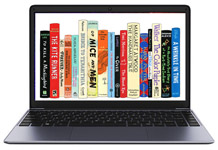
E-JASL: Electronic Journal of Academic and Special Librarianship (1999-2009, Volumes 1-10)
Date of this Version
Summer 2007
Document Type
Article
Citation
Electronic Journal of Academic and Special Librarianship (Summer 2007) 8(2). Also available at http://southernlibrarianship.icaap.org/content/v08n02/tella_a01.html.
Abstract
Abstract
Students’ ability to find and retrieve information effectively is a transferable skill useful for their future life as well as enabling the positive and successful use of the electronic resources while at school. It is a known fact in this digital era that any student at the higher level who intends to better achieve and go further in academics should have the ability to explore the digital environment. Students are increasingly expected to use electronic information resources while at the university. Research was undertaken to determine the level of influence of self-efficacy and the use of electronic information resources on students’ academic performance. This study examined self-efficacy and the use of electronic information as predictors of academic performance. Its participants were comprised of 700 students (undergraduate and postgraduate) randomly drawn from seven departments in the faculty of education, University of Ibadan, Nigeria. Data on the study was collected through the Morgan-Jinks (1999) academic self-efficacy scale and the use of the electronic information scale (UEIS) with r = 0.75. Three research questions were raised to guide the study.
The results indicate that self-efficacy and the use of electronic information jointly predict and contribute to academic performance; that respondents with high self-efficacy make better use of electronic information and have better academic performance; that a correlation exists among self-efficacy, use of electronic information and academic performance; and that the use of electronic information influenced respondents' performance in General Education subjects more than other subjects. Finally, the results reveal that the Internet is the electronic information source students access for information most often. Implications of these results and recommendations are discussed.
Included in
Communication Technology and New Media Commons, Higher Education Commons, Scholarly Communication Commons, Scholarly Publishing Commons


Comments
Copyright 2007, the authors. Used by permission.